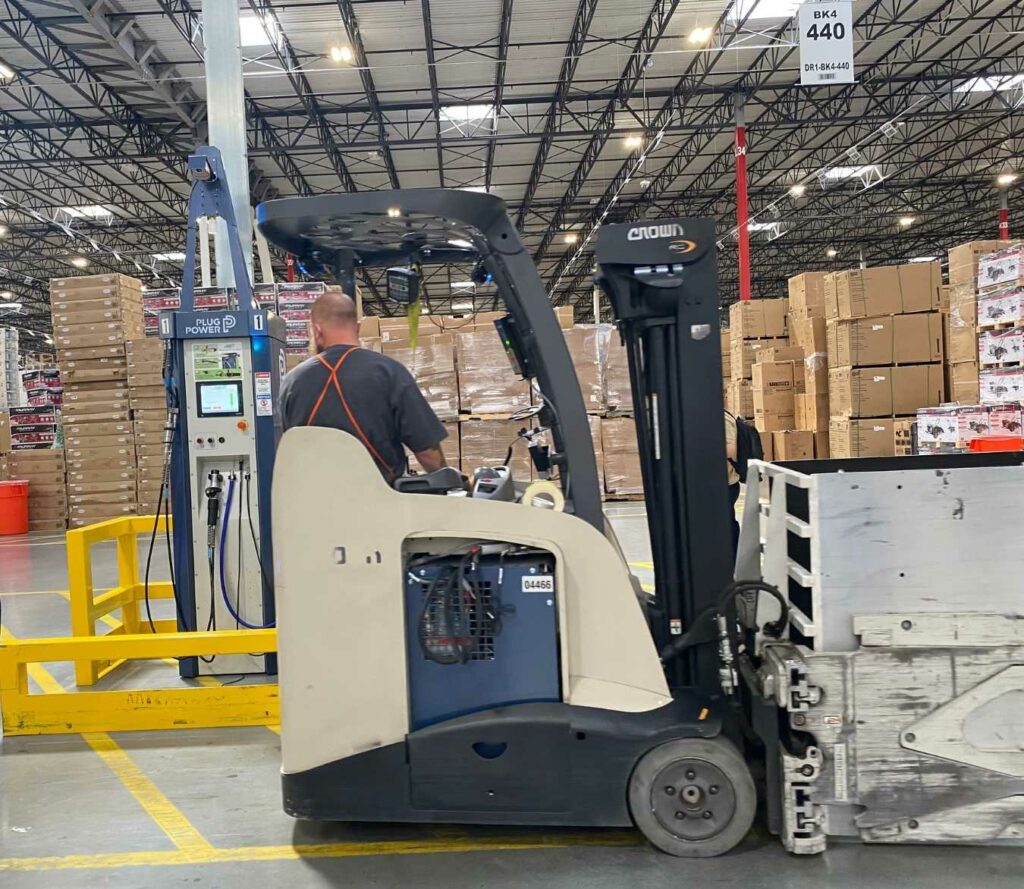The Power Beneath: Unveiling the Benefits of Hydrogen Fuel Cells for Forklifts
In the realm of industrial machinery, innovation takes center stage as the drive for cleaner, more efficient solutions continues to gain momentum. One such innovation that’s revolutionizing the materials handling landscape is the integration of hydrogen fuel cells in forklifts. This eco-conscious approach isn’t just about adopting the latest trend; it’s about redefining the way businesses operate while minimizing their environmental footprint. In this exploration, we delve into the undeniable benefits that hydrogen fuel cells bring to the world of forklifts, highlighting their potential for enhancing efficiency, reducing emissions, and shaping the future of warehouse operations.
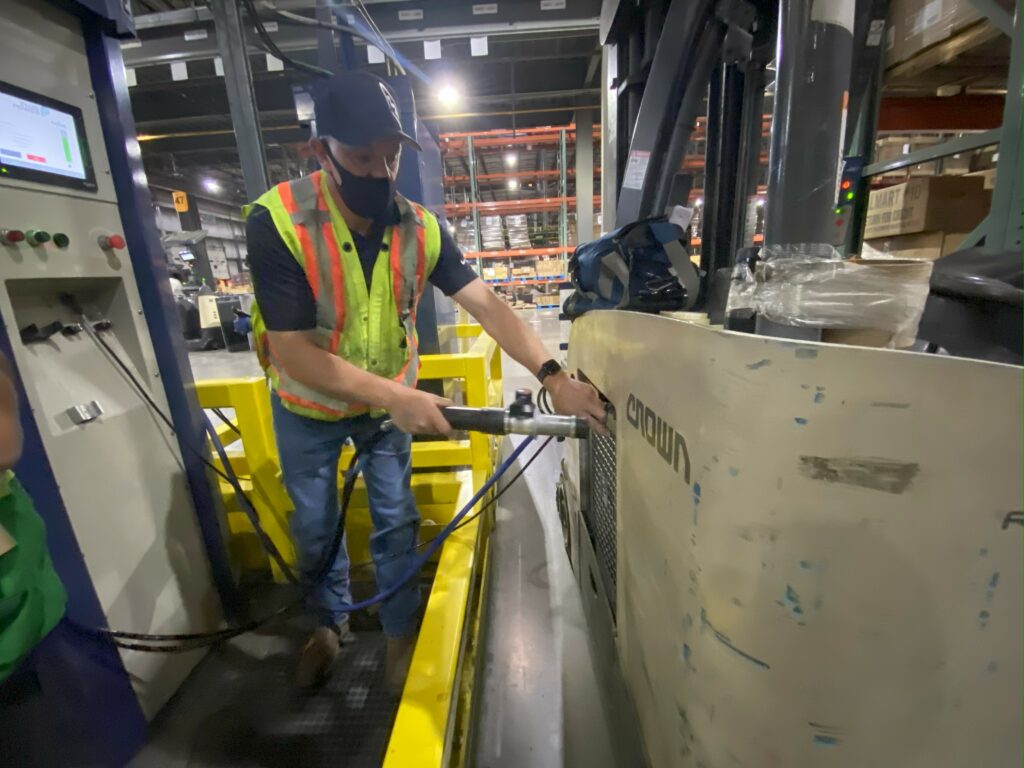
Are Fuel Cells for Forklifts more Efficient?
Forklifts are the unsung heroes of warehouses, tirelessly shuttling goods from one point to another. Enter hydrogen fuel cells—a transformative power source that redefines efficiency. Unlike traditional lead-acid batteries that require hours of charging, hydrogen fuel cells offer a rapid refueling process. With hydrogen refills taking mere minutes, forklifts experience minimal downtime, maximizing their availability for essential tasks. This efficiency boost translates into increased productivity and reduced wasted waiting for batteries to be charged, or exchanged.
Key points:
- Hydrogen fuel cells take 3 minutes or less to refuel (recharge)
- Run times vary but can extend for 10 hours between refueling
- Decrease wasted time exchanging or opportunity-charging forklift batteries
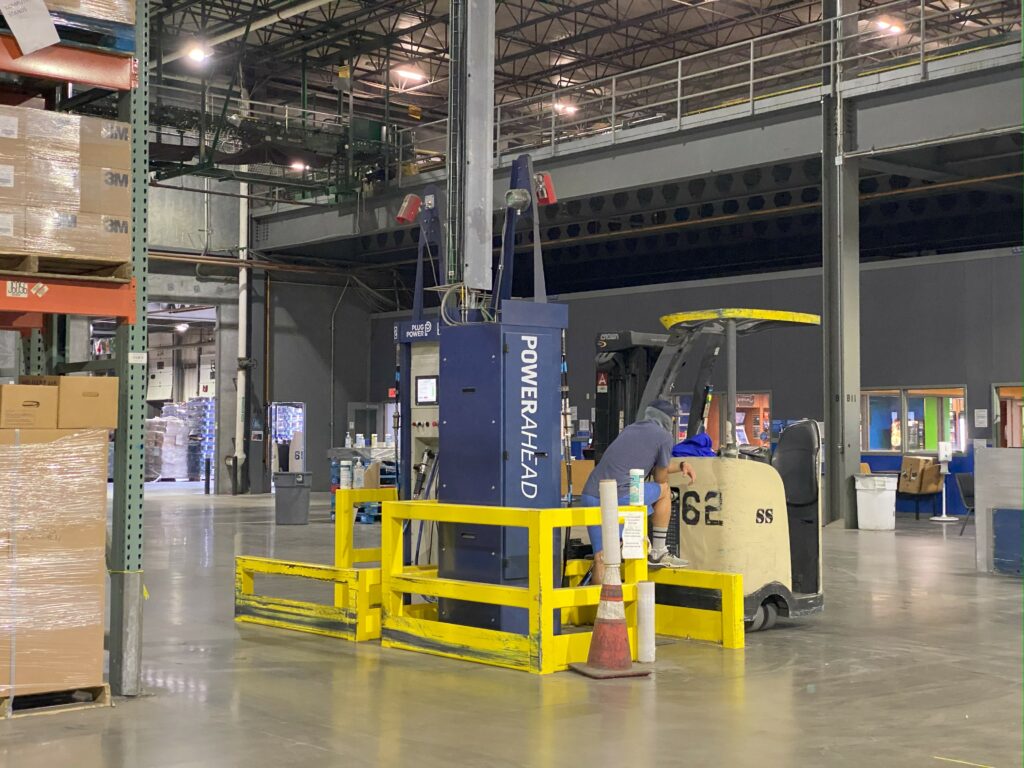
Do Hydrogen Fuel Cells for Forklifts have Lower Emissions?
For businesses looking to align with sustainability goals, hydrogen fuel cells provide an impressive solution. By producing electricity through a chemical reaction between hydrogen and oxygen, these fuel cells emit only water vapor and heat as byproducts. This stark contrast to the greenhouse gas emissions associated with traditional internal combustion engines is a game-changer. Forklifts powered by hydrogen fuel cells operate with zero emissions, contributing to cleaner air quality within warehouses—a crucial factor for employee well-being and overall environmental stewardship. Electricity from the grid is not zero-carbon. By using green hydrogen instead of grid electricity the carbon intensity is reduced to nearly zero.
Key points:
- Green hydrogen is made from water with only oxygen as a byproduct
- When green hydrogen powers a fuel cells, only hot water is the byproduct
- Green hydrogen is made using renewable electricity and has a lower carbon intensity than grid electricity
Do Hydrogen Fuel Cells have Extended Operating Hours and Consistent Performance?
Warehouse operations often run around the clock, demanding reliable and consistent performance from equipment. Hydrogen fuel cells excel in this realm as well. Unlike lead-acid batteries, which can experience performance degradation as they discharge, hydrogen fuel cells maintain a consistent level of power output throughout their operating cycle. This translates to steady forklift performance from start to finish, regardless of the remaining charge. Furthermore, fuel cell-powered forklifts don’t experience power loss as they near depletion, ensuring operations run smoothly until refueling is required.
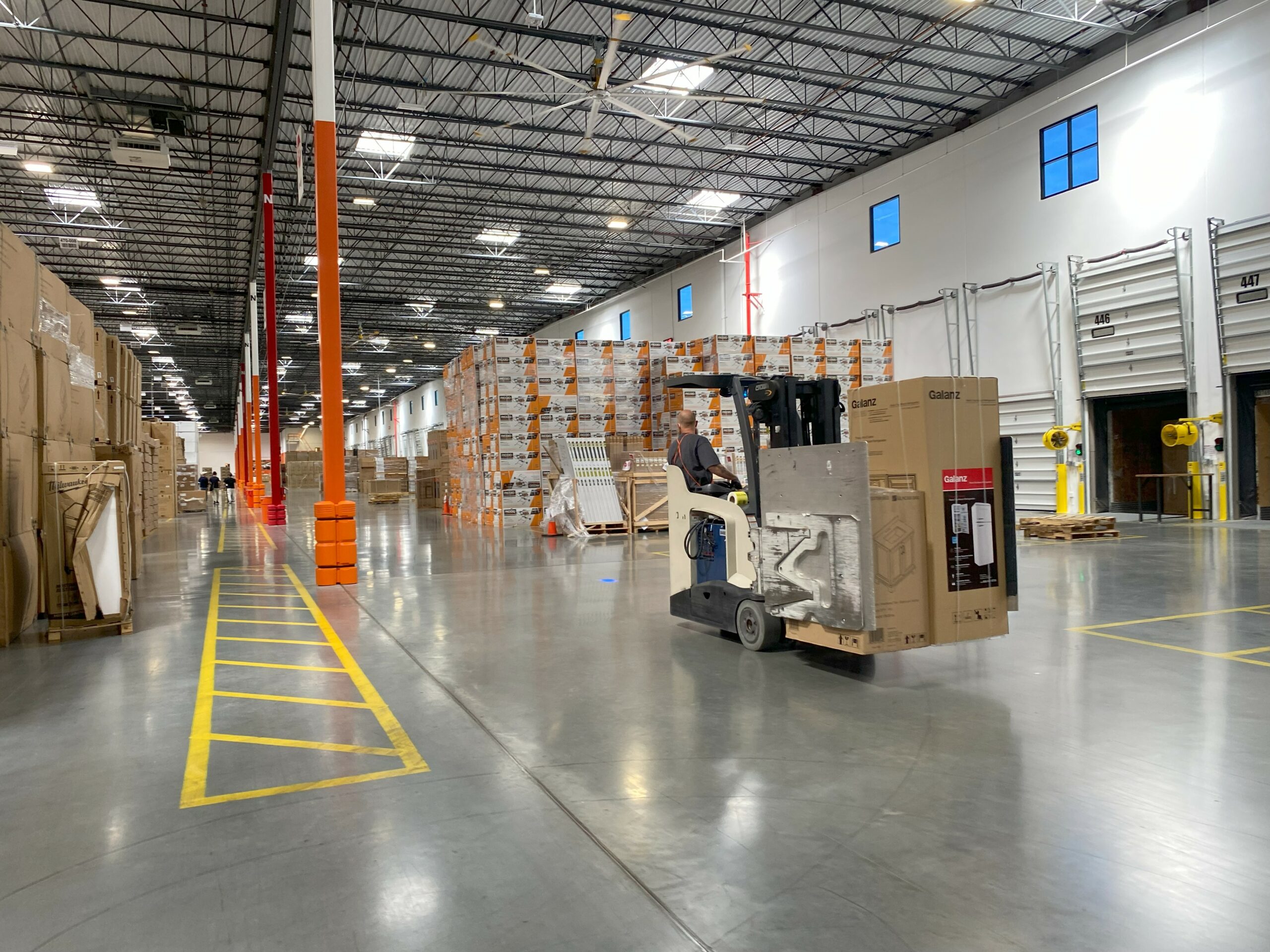
Key points:
- Fuel cells run at a continuous voltage
- By eliminating battery droop from discharging batteries, fuel cells show greater productivity throughout the shift
- Some companies claim a 17% increase in productivity
Do Hydrogen Fuel Cells Save Space in a Warehouse?
In the competitive world of warehousing, space is a prized asset. Traditional battery-charging stations demand considerable square footage, limiting the usable space for storing goods. Hydrogen fuel cell technology offers a unique advantage here. Refueling stations take up significantly less space than charging stations, freeing up valuable real estate that can be repurposed for storage, additional equipment, or operational expansion.
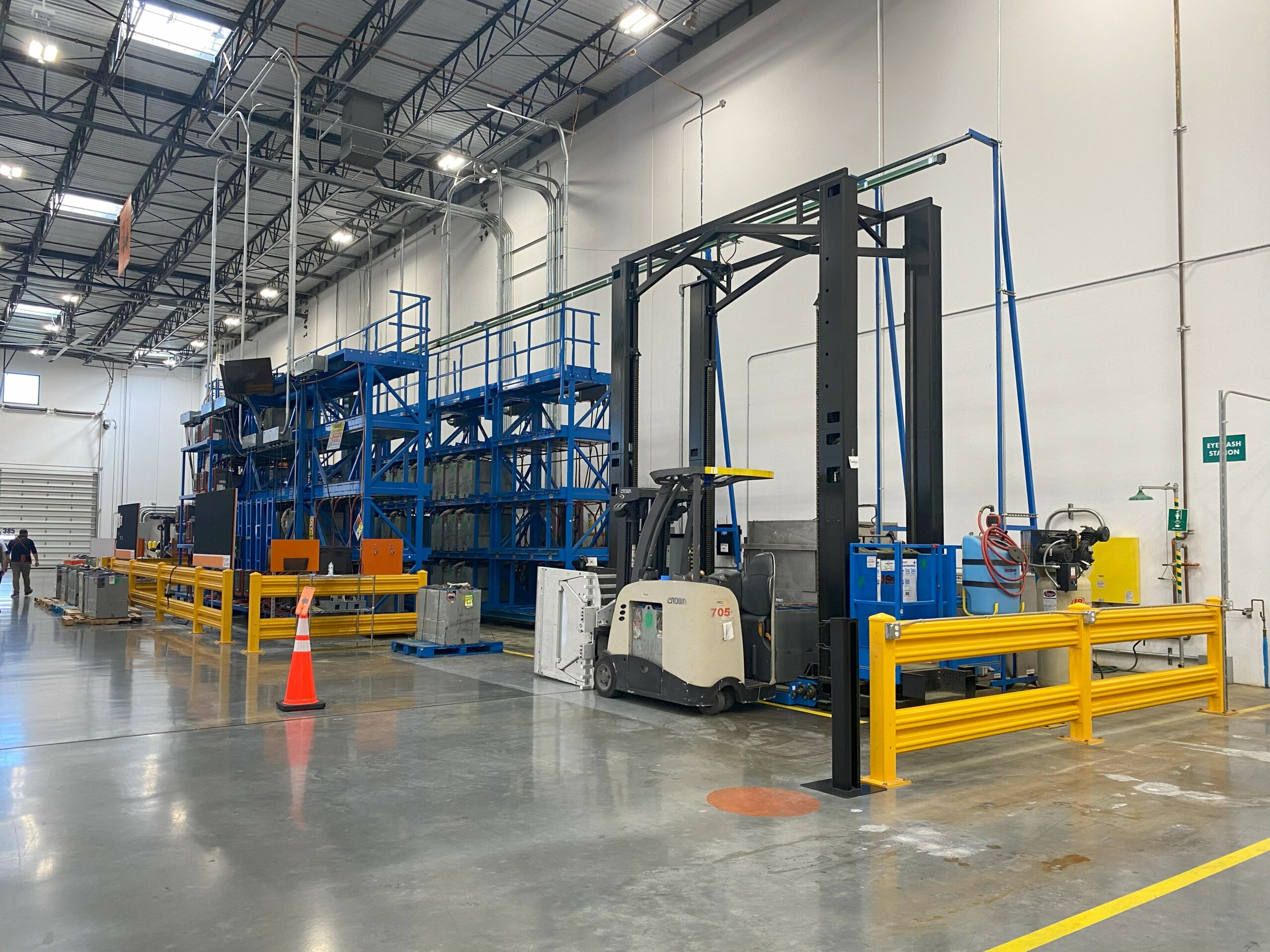
Key points:
- A battery room consumes 60 square feet of space for every park and charge forklift in the fleet
- Every battery being charged requires 6 square feet of space plus a working aisle
- A hydrogen dispenser requires less than 100 square feet
- You need only one dispenser for up to 75 lift trucks, saving 1000s of square feet in a battery room
What are the Challenges and Considerations for Hydrogen Fuel Cells for Forklifts?
While the benefits of hydrogen fuel cells for forklifts are impressive, it’s essential to acknowledge the challenges that come with adopting this technology. The initial investment cost for fuel cell systems and refueling infrastructure can be higher than smaller traditional battery setups. However, as the technology continues to mature and gain traction, prices are expected to decrease, making the long-term economic viability more promising.
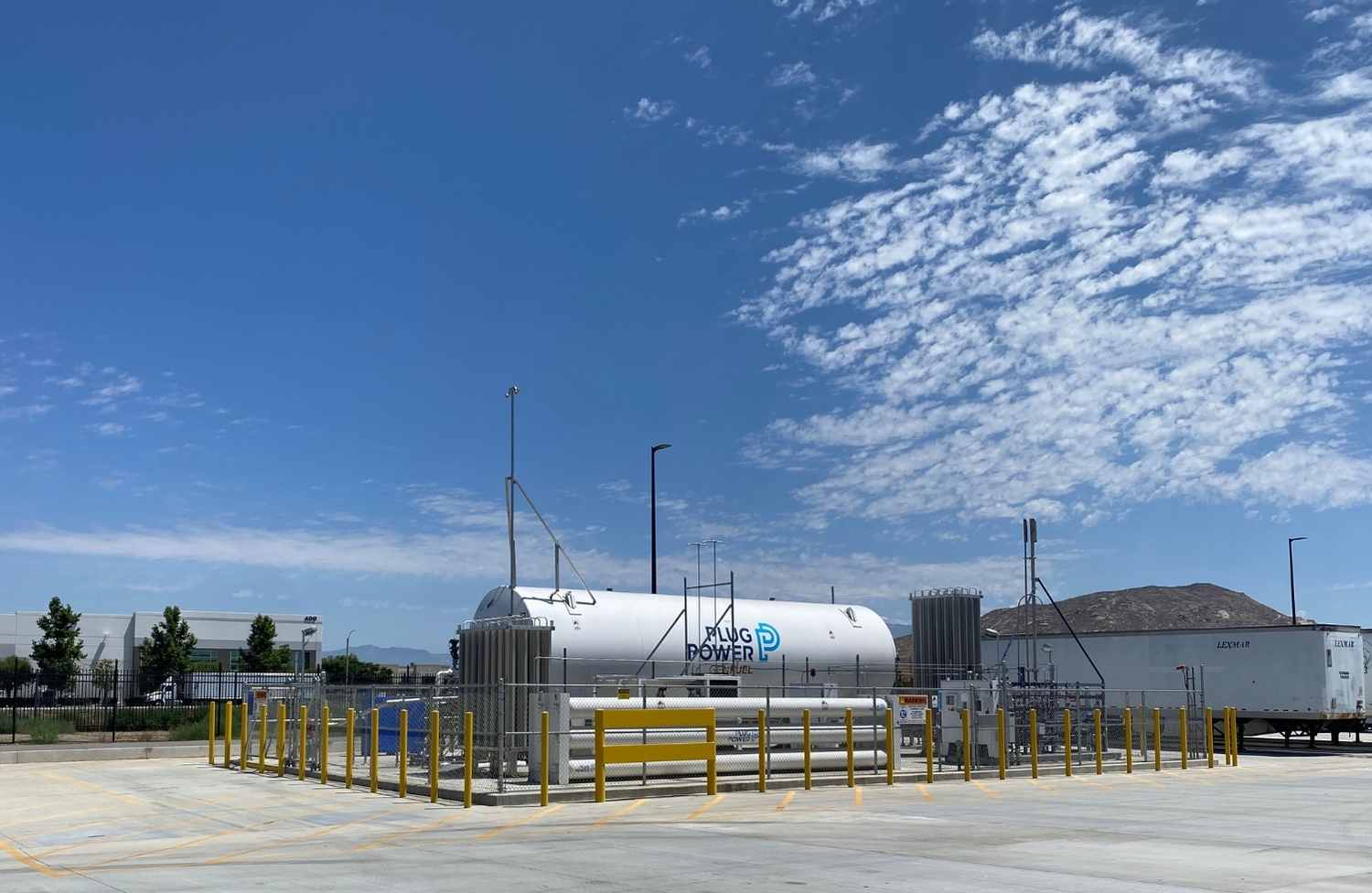
Key points:
- Due to the initial infrastructure investment, hydrogen fuel cells are better suited for medium to large sized fleets
- Hydrogen infrastructure costs, when compared to additional electrical building infrastructure investments are usually lower except for very small fleets of lift trucks
Are there any Tax Credits for Converting to Hydrogen Fuel Cells for Forklifts?
The US federal government has recognized the importance of clean energy in the industrial sector. Businesses embracing hydrogen fuel cells for forklifts can tap into valuable investment tax credits. These credits, acknowledged by the U.S. Internal Revenue Service, underscore the government’s recognition of clean energy adoption in the industrial sector. Eligible businesses can benefit from these incentives, which contribute to both operational efficiency and environmental responsibility. However, careful adherence to eligibility criteria and strategic tax planning, guided by experts, is essential to fully capitalize on these credits. State and local incentives may also play a role in maximizing the financial advantages of integrating hydrogen fuel cell technology into forklift operations.

There is a 30% ITC credit available for hydrogen fuel cells and the investment made into hydrogen fuel storage and dispensing.
A 10% credit may be available for fuel cells that contain domestic content.
A further 10% credit may be available for investments made in communities impacted by the decline of the coal industry.
It is important that businesses check with a trained tax professional. But in the meantime, here is a list of the requirements that businesses must meet to receive the tax credits for fuel cells:
- Tax credit must be claimed in the year in which the fuel cell property is placed in service
- Must be placed in service at sites within the United States or U.S. territories
- Must be new fuel cell systems
- Fuel cell systems must be rated at 500W or greater
- Fuel cell system must have an electricity-only generation efficiency greater than 30%
Links to Government Incentives:
- Investment tax credits in the United States of America
- Investment tax credits in Canada
- U.S. Department of Energy Funding
Conclusion: Steering Toward a Greener Tomorrow
In the dynamic landscape of modern business, staying ahead means embracing innovative solutions that redefine operational efficiency and environmental responsibility. Hydrogen fuel cells have emerged as a beacon of sustainable progress in the realm of forklifts, promising efficient, emission-free performance and a brighter future for warehouse operations. While initial investment considerations exist, the long-term advantages—ranging from increased productivity to reduced emissions—paint a compelling picture for businesses aiming to make a significant impact. As hydrogen fuel cells become increasingly accessible and integrated, they hold the potential to reshape how warehouses operate, guiding us toward a greener and more prosperous tomorrow.
Links to Fuel Cell Providers:
Links to Articles and News releases:
Opinions expressed in this article are the author’s own and do not represent financial or business advice. The author acknowledges the potential challenges and benefits of hydrogen fuel cells for forklifts in the context of sustainable business practices.





